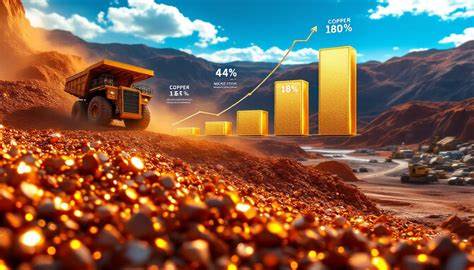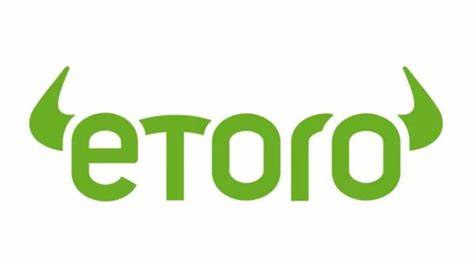Второй квартал 2025 года стал периодом заметного роста для крупнейшего бразильского горнодобывающего концерна Vale, который продемонстрировал значительное увеличение объемов производства ключевых для себя минералов – железной руды, меди и никеля. Рост добычи свидетельствует о пользе масштабных инвестиционных программ и способности компании адаптироваться к изменяющимся условиям глобального рынка сырья. Рассмотрим подробнее динамику производства, причины улучшения показателей и перспективы дальнейшего развития Vale в контексте текущих экономических и экологических трендов. Iron ore remains the cornerstone of Vale's operations, and the second quarter of 2025 saw production hitting an impressive 83.6 million tonnes, marking a 4% year-on-year increase.
This boost was largely due to enhanced operational output at the Brucutu mine, where commissioning of a fourth processing line significantly improved throughput. Additionally, the S11D project in northern Brazil achieved a new quarterly production record, underscoring the success of Vale's ongoing expansion and modernization efforts in its iron ore segment. Despite the overall increase in raw iron ore output, production of pellets—concentrated iron ore units primarily used in steelmaking—experienced a 12% decrease, sliding to 7.9 million tonnes in comparison to the previous year. This decrease aligns with Vale's adjusted production guidance for 2025, which reflects prevailing market conditions.
The company’s strategic prioritization of medium-grade iron ore products also contributed to a 3% reduction in iron ore sales volumes, down to 77.3 million tonnes. Such measures illustrate Vale's agile response to global demand patterns and price fluctuations in the commodities sector. Market dynamics also compelled Vale to accelerate preventive maintenance at the São Luís pelletising plant, resulting in a planned production pause during the third quarter of 2025. In response, pellet feed materials initially intended for pellet production will be redirected towards iron ore fines sales, optimizing the company's product portfolio's value in a challenging pricing environment.
The average realized prices for iron ore fines and pellets declined compared to the previous quarter, with fines dropping by $5.7 to $85.1 per tonne and pellets by $6.7 to $134.1 per tonne.
These reductions reflect a broader trend of lower iron ore reference prices globally, affecting numerous players in the sector. Despite these pricing headwinds, Vale maintains a confident outlook for iron ore production, projecting totals between 325 and 335 million tonnes for the entire 2025 calendar year. This projection underscores the company’s belief in sustained operational reliability and successful ramp-up of new mine assets that will continue to support output goals. Copper production emerged as a highlight in Vale's Q2 report, posting a nearly 18% increase year-on-year to approximately 92,600 tonnes. This figure represents the company's highest quarterly copper output since 2019, driven primarily by improved ore grades at the Sossego mine in Brazil, the full nominal capacity utilization of the Salobo Complex, and the progressive ramp-up of the Voisey's Bay Mine Expansion project in Canada.
The concurrent copper sales surged by 17% to around 89,000 tonnes, reflecting strong market demand and efficient operational execution. Nickel production experienced the most dramatic growth among the metals reported by Vale, surging by 44% to approximately 40,300 tonnes in the second quarter. The significant increase stems from improved performance at Canadian mining assets and the Onça Puma operation in Brazil, coupled with lower scheduled maintenance activities that typically impact production volumes. Correspondingly, nickel sales rose by nearly 20.7% to around 41,400 tonnes, marking the highest quarterly output figure for nickel since 2021.
Vale’s management highlighted in their official statement that the combination of new asset ramp-ups and enhanced operational consistency has underpinned stronger adherence to the company's 2025 production plan. Sustained improvements in productivity and efficiency at both nickel and copper divisions reinforce the upward momentum observed in the second quarter, signaling robust fundamentals amid ongoing market uncertainties. In parallel with operational advancements, Vale recently announced ambitious environmental initiatives, including plans to cease the use of water in iron ore processing at its Carajas complex by 2027. This move aligns with global trends emphasizing environmental sustainability and resource conservation, which are becoming increasingly critical in the mining sector. Implementation of water-free processing technologies would position Vale as a leader in responsible mining practices, potentially opening new avenues for growth and investor confidence.
Vale's strategic approach reflects an adaptive mindset essential for thriving in an industry marked by cyclical price volatility and shifting regulatory landscapes. By investing in modernization of processing lines, prioritizing production segments aligned with market demand, and advancing environmentally sustainable technologies, Vale aims to secure its competitiveness long term. From a macroeconomic perspective, iron ore remains a key raw material in global steel manufacturing, particularly driven by demand in emerging economies and infrastructure development worldwide. Meanwhile, copper and nickel are vital for the expanding clean energy and electric vehicle markets, where demand is expected to grow substantially in the coming decades. Vale’s increased production volumes in copper and nickel position it advantageously to capitalize on these growth trends.










